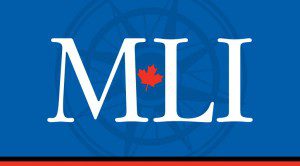 While there was certainly a win on the costs of genetic testing, the long-term effects of Transgenomic’s departure from the Canadian market, and the missed chance to clarify Canada’s patent laws, are less clear.
While there was certainly a win on the costs of genetic testing, the long-term effects of Transgenomic’s departure from the Canadian market, and the missed chance to clarify Canada’s patent laws, are less clear.
By Richard C. Owens, May 12, 2016
Depending on your perspective, Canadian patent law either dodged a bullet or missed an opportunity when recently the case of Children’s Hospital of Eastern Ontario v. Transgenomic Inc. settled. With the settlement, we will not know whether Canadian courts would have sustained the Canadian law of gene patents or, like the US Supreme Court, limited the patentability of isolated gene sequences.
Transgenomic has five patents over isolated nucleic acid sequences (genes) correlated with the risk of Long QT syndrome. Long QT syndrome is inherited, and it affects the heart’s electrical activity resulting potentially in arrhythmias.
In November 2014, lawyers for the Children’s Hospital of Eastern Ontario (CHEO), acting pro bono, filed a challenge in Federal Court arguing, among other things, that Transgenomic’s gene patents were invalid. By agreement dated March 8, 2016, the CHEO action settled. In the settlement, Transgenomic agreed to allow public sector labs and hospitals in Canada to test for long QT syndrome on a not-for-profit basis.
Gene patents, controversial since their inception, have recently been under siege. Myriad Genetics’ patents on the BRCA-1 and BRCA-2 genes used for determining susceptibility to breast cancer have been at issue in two cases. The Myriad Genetics case in the US Supreme Court (2013) found that isolated gene sequences were not patentable, since they are present in nature and require only trivial effort to isolate. The Court ruled, however, that cDNA sequences (sequences with non-expressive nucleic sequences, or introns, removed) were patentable since they were not naturally occurring. A similar result obtains in Australia, since the case of D’Arcy v. Myriad Genetics (2015).
The Myriad Genetics patents, and the costs of the diagnostic tests created by its patent monopolies, have been very controversial in Ontario and elsewhere in Canada. Public health authorities have been unwilling to pay the costs of the tests offered by Myriad itself, and began performing tests themselves much more cheaply. The consequence is that Myriad, long before any court found some of its patents invalid, essentially abandoned its Canadian patents, preferring to allow Canadian institutions to conduct infringing tests rather than to face a challenge to its patents here, and the attendant risks of a finding of invalidity spilling over into other jurisdictions.
With no decision in CHEO, patentability of isolated nucleic sequences remains untested in Canada. As a consequence, our patent system remains more like that of Europe, and the US prior to Myriad Genetics, allowing patents on isolated nucleic sequences provided that utility is clearly described.
While settlement of the CHEO suit is an opportunity lost to clarify Canada’s laws on gene patenting, the settlement is a clear gain in terms of health care costs. Is it a long-term win, or will the providers of innovative diagnostic tools lose interest in Canada for being an unprofitable and hostile market? Time will tell whether it is a good thing that Canada is insignificant enough that we profit from abandoned innovations, like the Transgenomic and Myriad patents, or whether a more innovation-friendly environment would benefit us more.
Richard C. Owens is an adjunct professor at the University of Toronto Faculty of Law.




